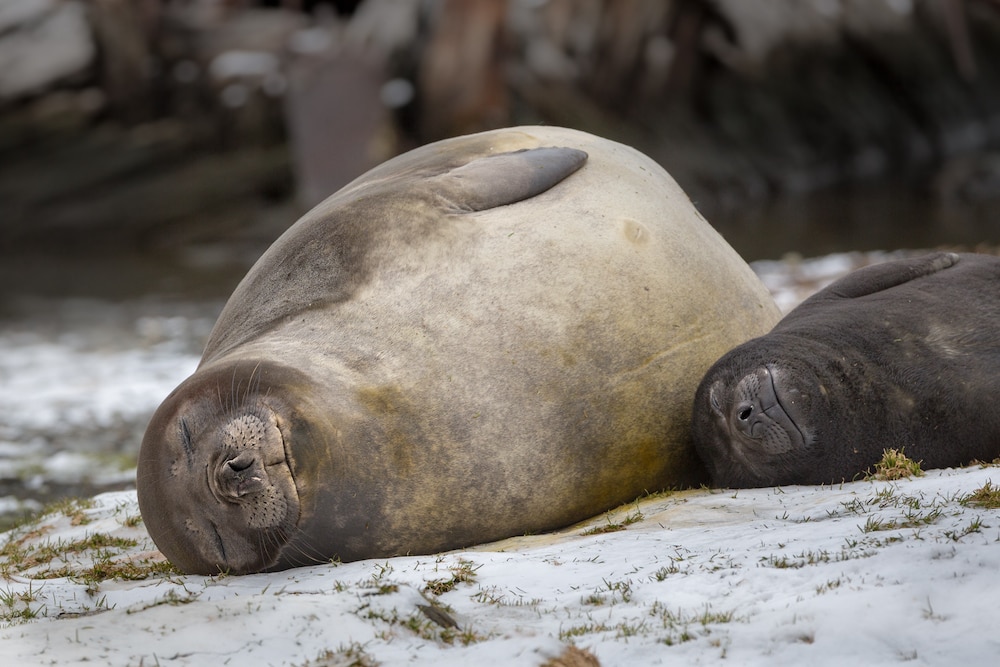Create a free profile to get unlimited access to exclusive videos, sweepstakes, and more!
Elephant seals have built-in mental GPS spanning thousands of miles
Especially impressive given the fact that humans regularly forget where they parked after an hour in the grocery store.

Birds might be the most famous migratory animals, but they aren’t the only ones, and they might not even be the most impressive. Many marine animals also complete incredible migratory journeys every year, alternating between wide-ranging foraging and returning to their home sites to reproduce.
Every year, after giving birth to a pup, female elephant seals embark upon a 10,000-kilometer trek over approximately 240 days, to forage. Despite the vast distances they travel, scientists have observed that seals successfully return home to give birth within five days of delivering a new pup.
In a new paper published in the journal Current Biology, Roxanne Beltran from the Department of Ecology and Evolutionary Biology at the University of California Santa Cruz, and colleagues, studied elephant seals in hopes of better understanding how they accomplish this feat of planetary navigation.
The team gathered data from 108 adult female elephant seals, tracking their migrations between 2004 and 2015, using instrument packages mounted to the seal’s bodies.
“We have a long-term program that’s run by Dan Costa at UC Santa Cruz where about 40 to 60 adult female seals per year are sedated on the beach at Año Nuevo and instruments are glued onto them. Then they go off on their trip, collect lots of data, and come back. Then we sedate them again, remove the instruments, and download the data,” Beltran told SYFY WIRE.
The data scientists collected revealed that seals appear to have a robust map sense which helps them to navigate on their 10,000-kilometer round trip each year. At present, it’s unclear exactly how the seals know where they are in relation to the breeding ground — whether they use the Earth’s magnetic field like birds do, or some other cues — and it’s possible we may never really know.
“That’s the million-dollar question that no one has been able to answer yet,” Beltran said. “There are probably multiple cues being used by animals so there’s no simple answer.”
Instead of answering how elephant seals navigate, the study illuminates when and why individual seals make navigational decisions. It was thought that perhaps the decision to return home was based on foraging success. Female seals don’t eat while nursing a pup and must rely on fat reserves gathered during the foraging period, therefore a potential explanation for varying return times was that those seals who were more successful at foraging might return home earlier.
Instead, the data revealed that return dates were highly defined by the distance to home and the amount of time needed to get there. These decisions were made at the individual level, as seals don’t travel together and don’t go to the same locations as one another.
“Seals go to different places, but the same seal often goes to the same place year after year. There’s a lot of consistency within individuals, but a lot of variability among individuals,” Beltran said. “Some seals go up to Alaska, others go out to Japan, there’s probably 20 degrees latitude difference between where they go.”
Consequently, the distance to the breeding ground can be highly variable from seal to seal. Yet, they all return within a week or two of one another. Pupping dates happen within a week of January 20 and female seals return to Año Nuevo with a high degree of precision around this date, even when their return journey might take more than 90 days, traveling upward of 150 kilometers each day.
Those seals which are farther away, turn toward home earlier than those closer to home, until they all converge on the beach to give birth to the next generation.
“How this sort of navigational ability develops when the animals are young is an open question and I think we’ll learn a lot more about that in the coming years,” Beltran said.
Knowing exactly where they are on the planet and where they need to go, even months after they’ve left home, is an impressive ability, especially when humans regularly forget where they parked after an hour in the grocery store.


























